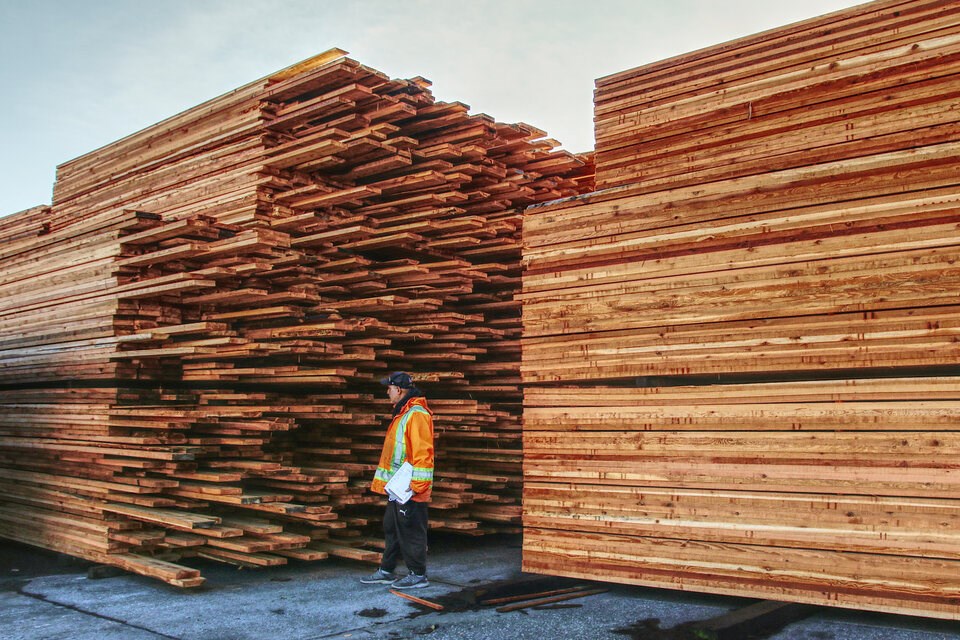Hunt for trophy trees yields a treasure trove on Vancouver Island
When TJ Watt went into the woods just outside the small West Coast town of Port Renfrew, he didn’t know what he’d find but he was hoping for a big score.
The photographer and member of an environmental non-profit called the Ancient Forest Alliance had been searching across southern Vancouver Island for mega flora – the last, untouched remnants of a 10,000-year-old forest. Wedding Invitations blog
He had found big trees in remote locations before, but nothing that fit the bill for the marketing campaign the group wanted to launch. They needed huge, dramatic, mind-blowing trees that were easily accessible to the public. But that combination is increasingly elusive because logging has removed 90 per cent of the old growth on southern Vancouver Island, and less than 1 per cent of what remains is thought to have trees over 500 years of age.
Just as darkness fell, however, Mr. Watt glimpsed a few grey, weathered spires of wood jutting up through the ragged forest canopy.
“I didn’t think there could possibly be big trees that close to Port Renfrew,” he said. “But those candelabra tops are a sign of really old cedars. So I stopped.”
There, 10 minutes off the road, he stumbled into a grove of giant trees so stunning that it has inspired a town founded by logging to call for the area to be protected. Rose Betsworth, president of the Port Renfrew Chamber of Commerce, said her organization has joined forces with the Ancient Forest Alliance because of the tourism potential in keeping big, old trees standing. The unusual partnership is testament to how far the debate over old-growth forest has come since the bitter War of the Woods drew international attention to logging practices on Vancouver Island two decades ago.
“They are a non-radical environmental group. That’s why I sided with them. They have a nice way of educating people about the old growth. … They bring a lot to the table and are stirring things up,” Ms. Betsworth said. “For decades this was a logging town. … My dad was a logger. But it’s about tourism now.”
As she spoke, a steady stream of vehicles pulled up to the town’s new visitor information centre, which opened this summer after a joint fundraising event with the Ancient Forest Alliance.
The popularity of Avatar Grove, as it was named in a brilliant branding move, has convinced the British Columbia government to protect the area – and it may yet lead to a rethinking of how the province manages its oldest forests.
Mr. Watt, who says hunting for trophy trees is as addictive as searching for gold, knew immediately he’d found something special.
“When we went in there, right away we came across some big cedars and we were running around like kids in a candy story,” he recalled. “Not only were they giants, but they had crazy shapes as well.”
They were just the kind of iconic trees his group needed for a public-relations battle to halt old-growth logging on Vancouver Island. And it didn’t hurt that James Cameron’s blockbuster movie, Avatar, had just come out, sensitizing the masses with a message about the importance of protecting ancient ecosystems. (Mr. Cameron has been invited to visit, but hasn’t responded.) The Avatar Grove trees are estimated at 500 to 1,000 years old, or more. Some were big when Samuel de Champlain began mapping Eastern Canada in 1608, and some may have been growing when Leif Ericson discovered Greenland, in 1003.
Ken Wu, a co-founder of the Ancient Forest Alliance, said he didn’t really believe Mr. Watt when he told him about the find, late in 2009.
“I was skeptical. … You just don’t expect to find big trees like that so close to a logging road,” said Mr. Wu. “But when I walked in there it was like, whoa, this is awesome. … It knocked my socks off.”
Since the discovery, thousands of visitors have arrived, giving weight to demands that the site be set aside as a park.
About 25 per cent of the grove is already protected by three overlapping Old Growth Management Areas, which call for special management practices.
But Calvin Ross, Vancouver Island resource manager for the BC Ministry of Forests, Lands and Natural Resource Operations, said in an interview this week the existing OGMAs will soon be expanded to take in all of Avatar Grove. He said details are still being worked out – but the area will not be logged.
“There is agreement between all the parties,” he said. “It protects it fully.”
John Pichugin, of the Teal Jones Group, said his company supports the decision, which will see an equal amount of timber made available for logging in another location.
“It’s a win-win for everyone,” said Mr. Pichugin, whose company’s subsidiary, Teal Cedar Products Ltd., holds cutting rights to the area.
Mr. Wu said he’s thrilled by news of the agreement, but his group still wants park status. “That’s a big step in the right direction. But OGMA’s only give temporary protection,” he said. “We need permanent protection.”
In addition to park status for the Avatar Grove, the group is calling for a ban on all old-growth logging, saying forest regulations don’t adequately protect ancient trees, which are generally accepted as those 500 or more years old.
To underscore the vulnerability of old growth under current regulations, Mr. Wu and Mr. Watt point to a nearby block of forest logged shortly after Avatar Grove was discovered. There, 20 massive stumps are scattered around a jumble of fresh logging debris covering a five-hectare patch.
“This would have surpassed Avatar Grove in grandeur – had we found it in time,” said Mr. Wu as he climbed on a stump more than four metres across. He estimated the tree was 900 years old when it was cut last year.
An investigation by the BC Forest Practices Board found Teal Cedar had harvested “several ancient trees” on the cut block, but concluded the company had not violated any regulations.
Avatar Grove might well have ended that way too, because shortly after Mr. Watt made his discovery, timber cruisers went through, leaving bright orange logging-boundary tape fluttering from branches.
“We are logging to the end of the resource, and that’s crazy,” said Mr. Wu.
Near Avatar Grove, a dozen vehicles are parked at a path that has been worn through the woods by heavy foot traffic. After being ignored since the retreat of glaciers, the trees have become stars. In the forest shade, cameras flash as people pose with the silent, towering trees.
“I have a degree in forestry. I understand sustainable harvesting. But logging a wonder of nature like this is unthinkable,” said K.T. Pirquet, a retired science teacher from Victoria.
Doug Hennick, a fish and wildlife biologist from Seattle, leaned back to look up at the giant red cedar.
“It’s magnificent and so close to the road. … There are so few of them left and they are so inspiring,” he said, adding they are “too valuable” to log.
Mr. Wu said he and Mr. Watt have continued hunting for big trees, and he promised a new find will be unveiled soon.
Giant tree tourism’s big growth in BC
Big-tree tourism isn’t new in British Columbia.
By the late 1920s, a grove of huge Douglas firs on the road to Port Alberni had become so well known it had drawn the attention of the Governor-General of Canada, Viscount Willingdon, who described it as “Cathedral Grove.” The name stuck, but the area didn’t become a park until 1944, when forest industry giant H.R. MacMillan donated 136 hectares of land to the province.
Cathedral Grove now attracts about one million visitors a year.
Interest in giant trees was revived in the 1980s, when Randy Stoltmann set out to establish a list of the biggest in the province. Before he died in an avalanche in 1994, Mr. Stoltmann had compiled a long list which lives on today as the British Columbia Register of Big Trees, a website maintained by the BC Ministry of Forests. His book, Hiking Guide to the Big Trees of Southwestern British Columbia, is a key reference.
Carmanah Walbran Provincial Park, the Meares Island Big Tree Trail, near Tofino, and Avatar Grove, are among the top destinations for those wanting to see forest giants. Several BC eco-tourism companies also offer guided trips to big trees. The Ancient Forest Alliance has posted a helpful link to finding such trees.
Link to original article not available anymore.





